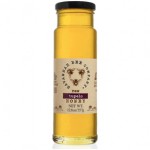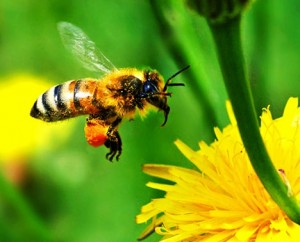 Tupelo honey is highly sought after and is considered to be a premium honey due to its purity and relative scarcity. Pure Tupelo honey is only produced in the Southeastern United States, in the Apalachicola River basin, the Chipola River (a tributary of the Apalachicola) and the The Ochlocknee and Choctahatchee Rivers in Northwest Florida and Southern Georgia. These areas are the only places in the world where certified Tupelo honey is produced. As it is the only place where the white tupelo tree,
Nyssa Ogeche
, that produces pure Tupelo honey, grows in any abundance.
Tupelo honey is highly sought after and is considered to be a premium honey due to its purity and relative scarcity. Pure Tupelo honey is only produced in the Southeastern United States, in the Apalachicola River basin, the Chipola River (a tributary of the Apalachicola) and the The Ochlocknee and Choctahatchee Rivers in Northwest Florida and Southern Georgia. These areas are the only places in the world where certified Tupelo honey is produced. As it is the only place where the white tupelo tree,
Nyssa Ogeche
, that produces pure Tupelo honey, grows in any abundance.
There are other types of tupelo, for example black tupelo, but this does not produce the high quality honey that the white tupelo does. When buying Tupelo honey you should ensure that it is the pure certified variety from the white tupelo and preferably raw honey straight from the comb.
The white tupelo blooms from early April to early May, depending on the weather conditions. This means that beekeepers have a small window of opportunity to ensure that their bees produce the maximum amount of pure Tupelo honey.
Black Tupelo, Nyssa Biflora , actually blooms in advance of white tupelo and is used to build up bee colony strength. However as soon as the white tupelo are ready to bloom beekeepers empty the hives of all stores and replace them with empty drawn comb ready for the bees to fill them up with pure white tupelo nectar and turn it into this much sought after honey crop.
The hives usually need to be transported to the river banks, often by barge, where the tupelo trees grow in time for the bees to start the harvest. As soon as the white tupelo trees look as if they are going out of bloom the beekeepers have to remove the frames of honey to prevent the bees mixing it with nectar from other types of plants or flowers and therefore ruining its purity. Timing is everything and it is easy to see why this is an expensive and time-consuming operation for the beekeepers.
It is estimated that it takes the nectar from over two million white tupelo flowers to produce just one pound of honey. Add that to the fact that one honey bee during her life will make 1/12th of a teaspoon of honey only and you will begin to see just how much effort is required to produce this amazing crop.
Tupelo Honey
Pure Tupelo honey is a light amber gold colour with a distinctive greenish tint. It has a distinctive and delicious flavour, with buttery undertones. Honey produced solely from the white tupelo is the only honey that will not granulate, this is due to its high fructose (levulose) (44.3%), low glucose (dextrose) (29.98%) ratio. This combination of sugars has also meant that it is the only honey that some diabetics can consume.

